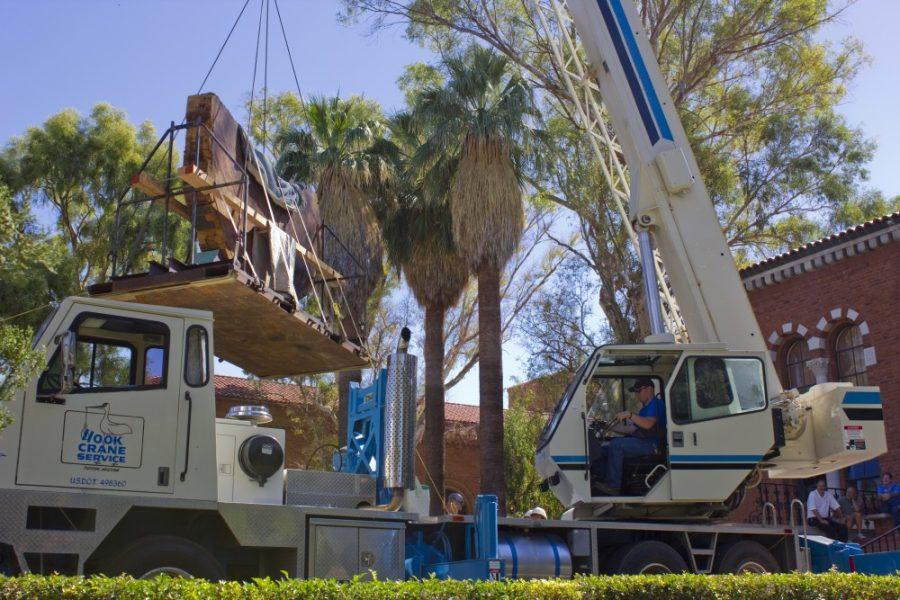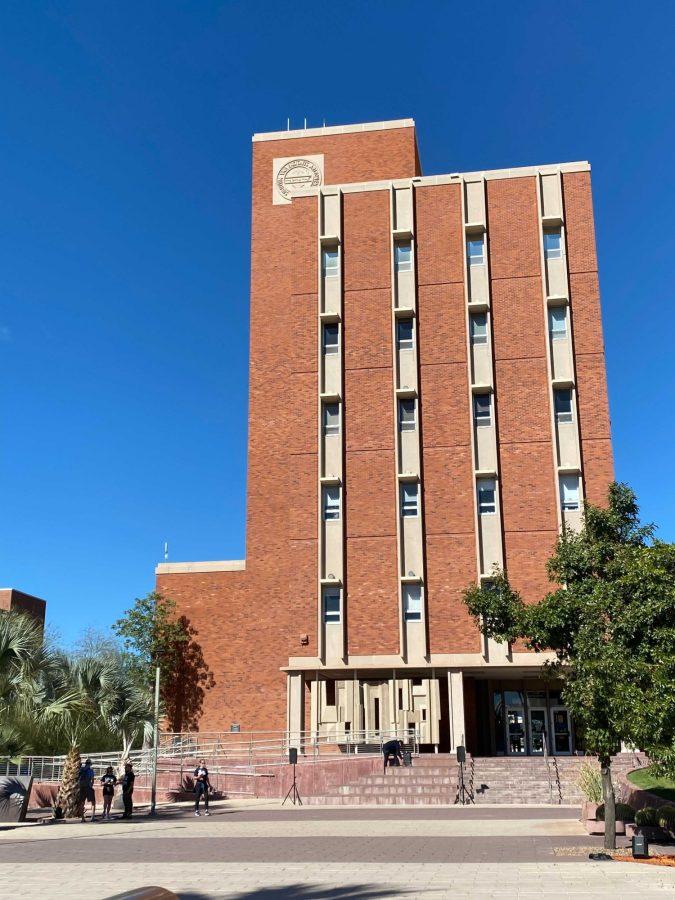A segment of a giant sequoia tree was moved on Friday from the Arizona State Museum South building to the Bryant Bannister Tree-Ring building, which is currently under construction.
The ring is from a tree that fell over naturally in Sequoia National Park around 1900, according to Christopher Baisan, senior research specialist at the tree ring laboratory. The UA requested a segment of the tree because they had been doing research on giant sequoias. A segment was cut with crosscut saws and shipped to Tucson via railroad in the 1930s.
After first being stored in the baseball stadium, the tree was moved to the Arizona State Museum South building when it was still a public museum.
“Now this facility is no longer open to the public, and the sequoia was orphaned in the building, where no one could see it,” Baisan said.
He added that the new Bryant Bannister Tree-Ring building includes a visitors space, where the tree ring will be housed. The primary function of the tree is not for research, but rather for public outreach.
“This is a public display, in order to give people a sense of the age and the size of these things and to talk about research,” said Baisan.
The tree segment cost around $4,000 to move, according to Chris Kraft, facilities project manager, but the cost was well worth it.
“We want to make it available to the public … it belongs in the new Bryant Bannister Tree-Ring building for public display,” Kraft said.
The preparation for the move began last month with a crew removing four pieces from the 10-foot-diameter tree segment, and rotating it to fit through the door of the building. Because the ring and base were too heavy for wheels or machine dollies, they were instead placed on solid metal rollers about an eighth of an inch thick. According to Albert Kinder IV, rigger foreman for the project, the combination of tree, base, and rollers had only a quarter inch gap from the doorway it was being moved through.
The exact weight of the segment was unknown, and since the weight fluctuates with humidity, the crew moving it needed a bigger crane than the one they had brought to move the tree safely.
Kinder represents the third generation in his family to move this tree ring, with both his grandfather and father having moved it in the past.









